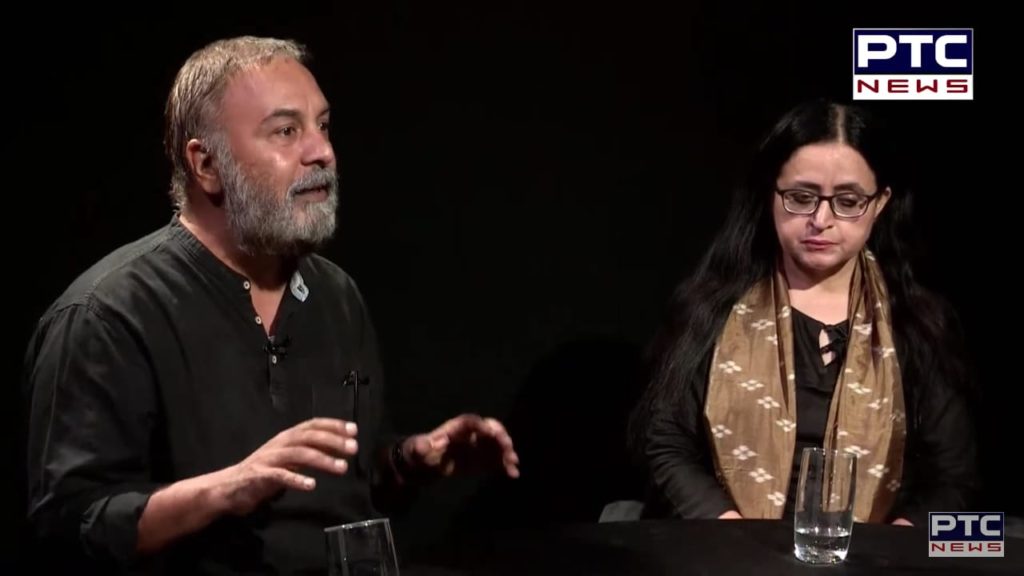Jallianwala Bagh -The Politics of Memory, Metaphor & Memorialisation -A TV Debate
![Where do memories reside when there are no memorials? Do memorials help us remember, or do they also make us forget what is not memorialised in them? What the Body Remembers, and What Is Memorialised in Concrete? Does renovation create ‘new old memories’? Preservation Vs Renovation Vs Memorialisation. WSN presents Senior journalist and ace TV host SP Singh’s Daleel -a conversation with renowned theatre director, playwright and art critic Dr Sahib Singh and Cultural Studies expert Dr Sakoon Singh, author of ‘In […]](https://www.theworldsikhnews.com/wp-content/uploads/2021/09/Jallianwala-Bagh-2021-360x189.jpg)
Where do memories reside when there are no memorials? Do memorials help us remember, or do they also make us forget what is not memorialised in them? What the Body Remembers, and What Is Memorialised in Concrete? Does renovation create ‘new old memories’? Preservation Vs Renovation Vs Memorialisation. WSN presents Senior journalist and ace TV host SP Singh’s Daleel -a conversation with renowned theatre director, playwright and art critic Dr Sahib Singh and Cultural Studies expert Dr Sakoon Singh, author of ‘In the land of the lovers: A Punjab Qissa’.
Memorials are apparently constructs conceived, designed and executed in such a way so that future generations remember, learn and are inspired by historical milestones of the past — the sacrifices made, the mistakes committed, the lessons learnt, the achievements scored.
But where do memories reside when there are no memorials? Also, how does one deal with the perennial problem that memorials freeze memories? And that raises a pertinent question: Do memorials help us remember? Or do they also make us forget what is not memorialised in them?
Senior journalist SP Singh raises this pertinent question about what and how much can be memorialised in concrete, and how does it compare with what Shauna Baldwin calls “What the Body Remembers”? How must we preserve that blood-dripping memory of Hindu-Sikh-Muslim unity, the resilience of our people in the face of brute power, the legacy of resistance, and the inspirational distance of a few yards from Sri Darbar Sahib, Amritsar?
Jallianwala Bagh – A stark, uneven ground surrounded by residential and commercial areas where hundreds of innocent Punjabis – men, women and children – were massacred by British General Reginald Dyer. Its Disneyfication-McDonaldisation is aimed more at turning it into a chic tourist-magnet, playing havoc with history. While there have been some feeble protests, even those remained focussed on asking for minor alterations in the new-look Bagh.

Much bigger questions beg for our attention. Does renovation create ‘new old memories’? We need to grapple with this preservation versus renovation versus memorialisation quagmire.
Were there other ways of memorialising Jallianwala Bagh? Remember how the Spanish Civil War is memorialised? Picasso just painted “Guernica,” and it brought worldwide attention to what Nazi Germany and Fascist Italy did in that Basque Country town in northern Spain. Few visit Guernica, the town; almost everyone knows about the painting, and the painting is one of the strongest symbols of peace and a statement against Nazism, Fascism. Hiroshima or Dresden or Mosul or Aleppo must not become tourist destinations, neither should have Jallianwala Bagh become one. Both, Guernica and Jallianwala Bagh must continue to symbolise what unjust wars and regimes can do to innocent people.
Much bigger questions beg for our attention. Does renovation create ‘new old memories’? We need to grapple with this preservation versus renovation versus memorialisation quagmire.
It is easier to understand the problem with reference to the ongoing farmers’ movement. At some point in time, someone would/could/should try to memorialise the entire Andolan. What could it be? A mural? A museum? A sculpture? A painting? What all would it include? Huge crowds of farmers moving to Delhi? Young men pulling down police barricades? Water cannons directed at elderly farmers? The Singhu border? The hordes of armed police? The crowds of women in yellow dupattas marching forward? Young women taking to the microphone? The tractor trolleys doing their magic? People stuffed like sardines inside trolleys in bone-numbing winter? The desi geysers? Men and women living in roadside hutments?
The daily dance of death and fear? The looming shadow of Covid? The nails embedded onto the roads? The toll-free plazas? The guy turning the nozzle of the water cannon? The tension between Shambhu border and the main stage?
Torrential rains turning the entire Andolan site into a hellish affair? Women piloting tractors? The tractor march? The January 26 fiasco? The hate rustled up against the farmers? The epithets of Khalistanis? The slurs of Naxalites? The daily dance of death and fear? The looming shadow of Covid? The nails embedded onto the roads? The toll-free plazas? The guy turning the nozzle of the water cannon? The tension between Shambhu border and the main stage? The split within the Singhu border protest? The strong but separate show at Tikri border? The drama of parleys at the Vigyan Bhawan? Even if you include all of these, a thousand more strands will be left out.
And those will be very valuable memories – left out of memorialisation.
Now, imagine, how much we must have forgotten about the Jallianwala Bagh of 1919, and how little we froze in concrete!
The body remembers. The body polity forgets.
We will never be able to recall the great sacrifice of Ratto and Bugga Mahasha Rattan Chand and Chowdhry Bugga Mall – if this is how we memorialise 1919. Do you know who were they?
It is time to find out. Or our memories will go down the well of forgetfulness.
Image courtesy: Scroll
 Print
Print

 233
233

